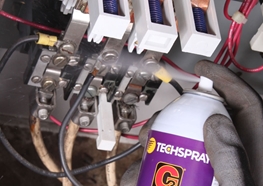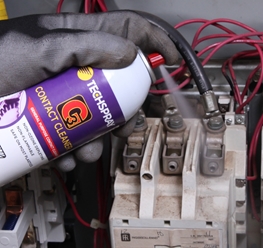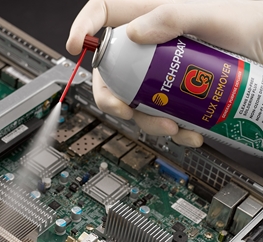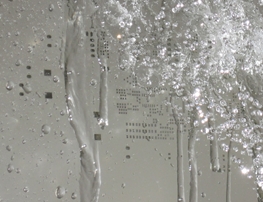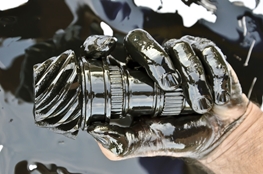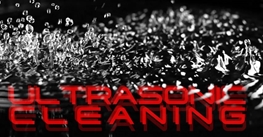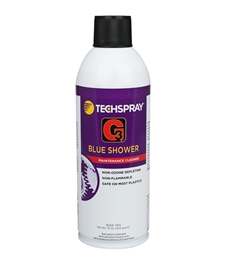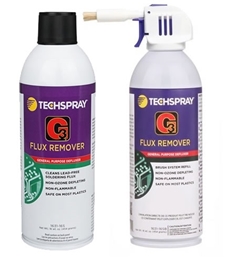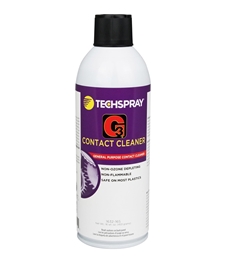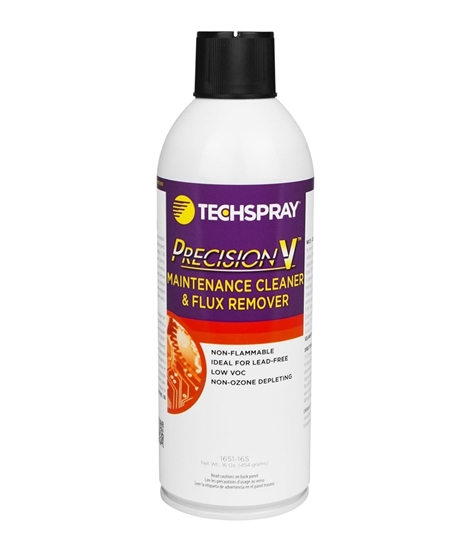
Precision-V Flux Remover & Maintenance Cleaner
Nonflammable & powerful precision cleaner

Request A Sample
Your Sample Request
Precision-V Flux Remover & Maintenance Cleaner
*=required field
TDS
REGS
SDS
FAQ's
How do you know the safe exposure limit of a degreaser, contact cleaner, or flux remover?
The personal hazard associated with a solvent is often defined using Threshold Limit Value (TLV), which is the recommended average exposure in an 8-hour day, 40 hour work week. The lower the TLV of a particular substance, the less a worker can be exposed to without harmful effects. TLV is stated on the SDS of chemical products, in additional to recommended personal protection equipment (or PPE). The threshold limit value of a solvent is generally set by the American Conference of Governmental Industrial Hygienists (ACGIH). The unit of measure is Parts Per Million (PPM).
How do you use an aerosol cleaner?
Hold object to be cleaned in vertical position. Pull trigger gently to control solvent flow rate. Spray from top to bottom, allowing the liquid to flush away contaminants.
Articles
5 Important Tips for Cleaning Electrical Contacts
The following are five important tips for cleaning electrical contacts effectively and safely. These tips are simple and easy to implement, yet they can make a significant difference in the longevity and performance of your electronic devices.
Read This Post
Safe & Effective Electrical Maintenance with Aerosol Contact Cleaners
A contact cleaner is a solvent cleaner designed to remove contamination from electrical contacts, the conductive surfaces of connectors, switches and other electrical and electronic components with moving surface contacts. A contact cleaner’s job is to quickly remove insulative contamination as quic...
Read This Post
Flux Remover Video How-To Guide
Today, I’m going to take you through the best practices for cleaning printed circuit boards with a flux remover. A flux remover cleans off flux left behind after the soldering process. That’s important because flux residue can cause corrosion or create what’s called “dendrites”, which are ionic part...
Read This Post
Replacing n-Propyl Bromide (nPB): What You DON'T Know CAN Hurt You
Welcome to our webinar, our Techspray webinar is replacing n-propyl bromide (nPB), which you don't know can hurt you. We're going to be going over issues with n-propyl bromide, and how to identify and qualify replacement as efficiently as possible. You guys aren't chemical experts, at least I assume...
Read This Post
Isopropyl Alcohol (IPA) Replacements for Electronic Assembly and Repair
Isopropyl alcohol, also referred to as IPA, isopropanol, and 2-propanol, may be in short supply for the coming weeks or months because of the COVID-19 (Novel Coronavirus) pandemic. This will be particularly challenging for companies using IPA for flux removal, stencil cleaning, and industrial degrea...
Read This Post
The Expert’s Guide to Degreasers & Maintenance Cleaners
A degreaser is a cleaner designed to remove grease, oils, cutting fluids, corrosion inhibitors, handling soils, finger prints, and other contamination common in assembly, stamping, other types of metal fabrication, refineries, motor repair, airplane hangars, and many other applications.
Read This Post
Guide to Solvent and Water-based Ultrasonic Cleaning
When you are removing tough soils like baked-on flux residues or heavy industrial greases, you can have the strongest solvent cleaner in the world (like those offered by Techspray), but you will still need some kind of agitation. You can brush, wipe, and use all manner of elbow grease, but none of t...
Read This Post
5 Best Practices for Cleaning High Reliability PCBs
Aerosol cleaning prevents the introduction of new contaminants. While there are some obvious pros of aerosol cleaning, questions remain as to whether this method of benchtop cleaning can consistently and reliably clean a circuit board. This paper examines the role that different variables play in ae...
Read This Post
You did not finish submitting your information to request a sample

